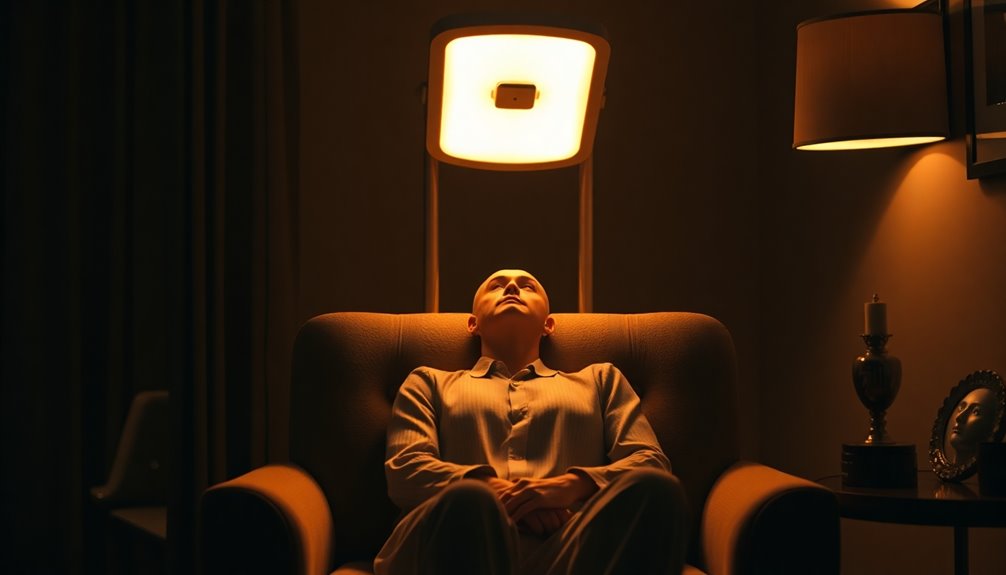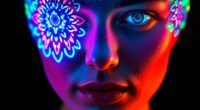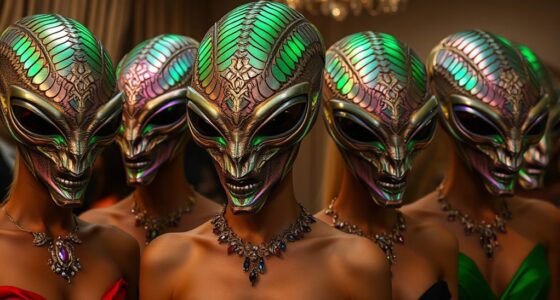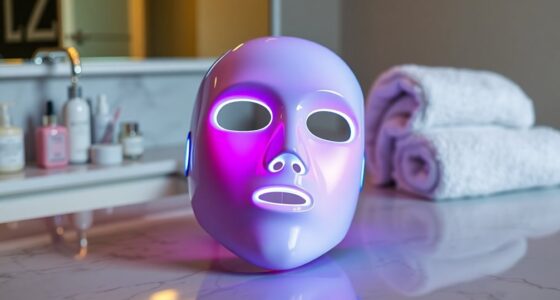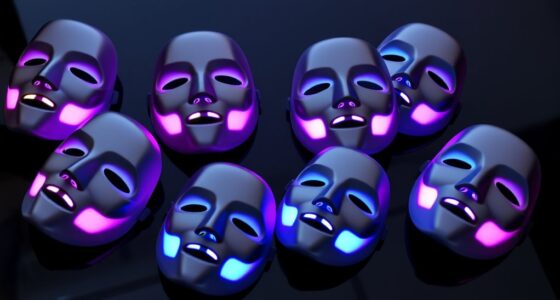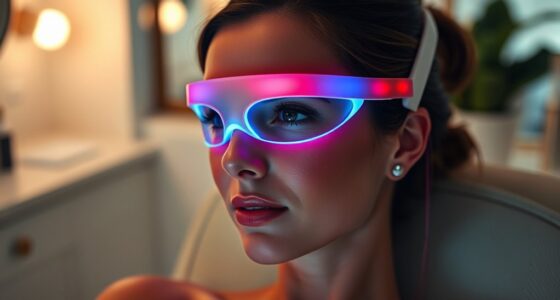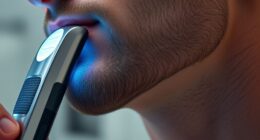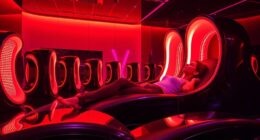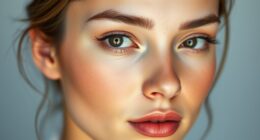Therapy lights really do work, especially for Seasonal Affective Disorder. They mimic natural sunlight, helping to reduce depressive symptoms, boost mood, and improve your energy levels. Many celebrities swear by their effectiveness, incorporating light therapy into their self-care routines. You'll find that it's cost-effective and easy to use at home, making it accessible for everyone. There's much more to discover about the benefits and combinations with other treatments, so keep exploring this topic!
Key Takeaways
- Light therapy effectively reduces symptoms of Seasonal Affective Disorder, with many users reporting improved mood and energy levels.
- It mimics natural sunlight, positively influencing circadian rhythms and enhancing sleep quality.
- Therapy lights are cost-effective and easy to use, making them accessible for a wide audience, including celebrities.
- Combining light therapy with cognitive behavioral therapy may enhance mental health outcomes for users.
- Research shows high satisfaction levels among users, highlighting its potential as a reliable self-care practice.
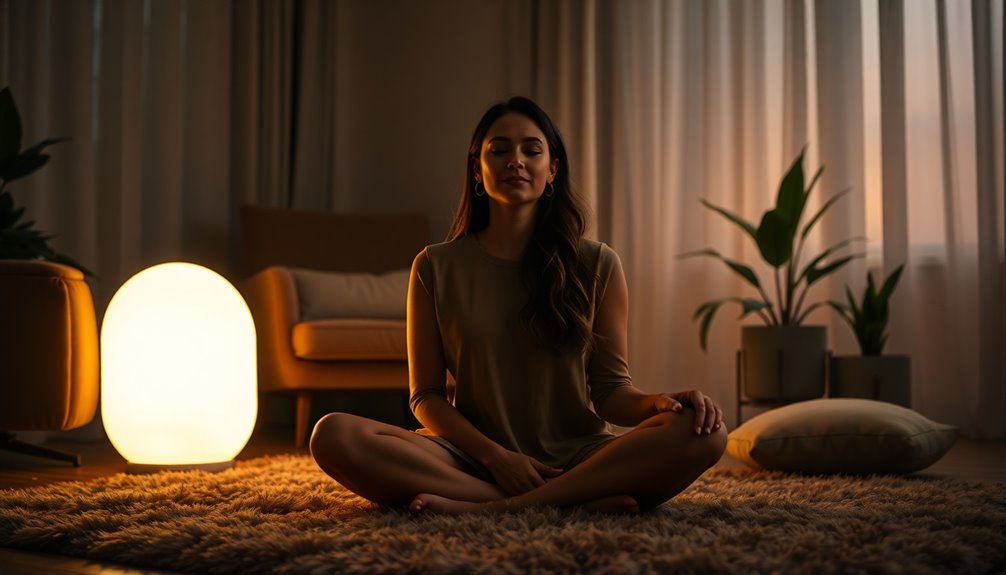
Light therapy has emerged as a promising treatment for mood disorders, particularly Seasonal Affective Disorder (SAD), with studies showing significant reductions in depression symptoms. If you're struggling with seasonal blues, you might find that bright light therapy offers relief by mimicking natural sunlight. Research indicates that this approach can effectively alleviate symptoms, making it a popular choice for many seeking alternatives to conventional antidepressants.
Interestingly, light therapy isn't just limited to those with SAD. While its effectiveness for nonseasonal depression is less pronounced, many individuals have reported improvements. In fact, some studies suggest that light therapy's impact can rival that of certain antidepressant medications, particularly for those experiencing seasonal challenges. Dawn simulation, another form of light therapy, also provides benefits similar to bright light, making it an option worth considering.
The biological mechanisms behind light therapy are fascinating. By influencing your circadian rhythms, it helps regulate your internal clock, which can lead to a better mood and improved sleep. You may notice symptom reductions that include less fatigue and enhanced concentration, making it easier to tackle daily tasks. Additionally, bright light treatment has shown a significant effect size of 0.84 in reducing depression symptom severity, further supporting its effectiveness. Understanding the role of self-care practices in your overall wellness can also enhance the benefits of light therapy.
Plus, light therapy is generally more cost-effective than traditional treatments, providing an accessible option for many.
If you're a college student or part of the general population dealing with mood fluctuations, light therapy could be a game-changer. It's easy to set up at home with a light box, allowing you to incorporate it into your routine with minimal effort. Many people report high satisfaction levels, often exceeding their initial expectations.
It's also reassuring that research shows no significant differences in effectiveness based on gender, although age-specific studies are still needed.
However, it’s important to approach light therapy with realistic expectations. Many studies have limitations, with some lacking robust methodologies. As researchers continue to explore the efficacy of light therapy, especially for nonseasonal applications, standardizing protocols will be crucial for consistent results. Moreover, as more celebrities endorse light therapy treatments, it’s essential to distinguish between anecdotal experiences and scientifically backed outcomes. The increasing popularity has led to a surge in interest regarding the benefits of LED therapy for celebs, prompting both consumers and researchers to scrutinize its true effectiveness. Continued investigation and transparent reporting will ultimately help potential users make informed decisions about incorporating light therapy into their wellness routines.
You might find that combining light therapy with other treatments, like cognitive behavioral therapy, enhances your overall experience.
Frequently Asked Questions
How Much Time Do Celebrities Spend Using Therapy Lights Daily?
Celebrities typically spend between 5 to 20 minutes daily using therapy lights.
You'll find that many of them start with more frequent sessions, adjusting based on their skin's response.
Customization is key, so working with a skincare professional can help tailor the duration and frequency to your specific needs.
Consistency plays a significant role in achieving noticeable results, so regular use is highly recommended for optimal benefits.
Are There Any Side Effects From Using Therapy Lights?
Yes, there are some side effects from using therapy lights. You might experience mild agitation, headaches, or eye strain, especially if you're sensitive to light.
Using the lights in the evening could disrupt your sleep patterns, and some users report feeling tired afterward.
Temporary blurred vision or skin irritation can also occur.
It's important to consult a healthcare provider to ensure safe use and to protect your eyes during treatment.
Can Therapy Lights Help With Seasonal Affective Disorder?
Sure! Therapy lights can certainly combat the blues of Seasonal Affective Disorder (SAD).
Studies show they significantly reduce symptoms, helping you feel more energized and uplifted. By stimulating retina cells, these lights regulate your circadian rhythms, boosting serotonin and improving mood.
If you're consistent, you might notice a wonderful change in your sleep patterns too.
Just remember to choose a high-quality light and consult a professional before diving in!
What Color of Light Is Most Effective for Therapy?
When it comes to therapy lights, the most effective color depends on your specific needs.
For mood enhancement, full spectrum light mimics natural daylight, while blue light can help alleviate depression.
If you're targeting skin issues, red light boosts collagen production, and blue light effectively treats acne.
For pain relief, near-infrared light penetrates deeply, aiding in muscle recovery.
Choose the light color that aligns with your therapy goals for optimal results.
How Do I Choose the Right Therapy Light for Me?
Choosing the right therapy light for you involves considering your specific needs.
Look for a light that emits a high intensity mimicking natural sunlight, ideally around 10,000 lux.
Check for safety standards to ensure it's safe for regular use.
Think about adjustable features that allow you to direct the light effectively.
Lastly, consider your lifestyle—if you need portability or a dual-purpose design, select one that fits your daily routine best.
Conclusion
So, do therapy lights really work? Absolutely! These magical devices may just be the secret weapon you need to boost your mood and energy levels. While results can vary, many people find relief from seasonal depression and fatigue after using them. Celebrities swear by their benefits, and who wouldn't want to shine like a star? If you're looking to brighten your day, give therapy lights a shot—you might just light up your life!
